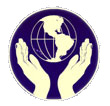
|
 |
 |
 Health & Beauty | March 2008 Health & Beauty | March 2008  
Seeking Relief; Woman Spent Week in Ketamine-Induced Coma
 Shawn Jeffords - The Sudbury Star Shawn Jeffords - The Sudbury Star
go to original


| | For more information on RSD, visit www.rsdcanada.org, or www.rsdfoundation.org. | | |
Strapped to a bed in a Mexican hospital room, Heather Kennedy-Redmond was battling shadows emerging from the darkest corner of her mind.

Tubes were inserted in her body to feed her and help her breathe, while beeping monitors registered her vital signs.

Having exhausted traditional medicine, the 26-year-old woman had travelled to Mexico for experimental treatment of chronic pain.

Kennedy-Redmond of Mooretown, Ont., south of Sarnia, has a little-known condition called reflex sympathetic dystrophy, or RSD.

The controversial treatment she had involved inducing a coma by flooding her body for five days with ketamine, a powerful human and veterinary anesthetic known to street users as Special K.

For the next seven days vivid hallucinations threatened to consume her. But a year later, the pain Kennedy-Redmond endured has eased.

Parents Linda and Paul Kennedy and husband Ken Redmond hovered over her for the entire week, hoping she would emerge from the coma changed.

Looking back, Kennedy-Redmond remembers a simple gesture in that hospital room in Monterey as being a revelation.

"I remember holding my dad's hand and it didn't hurt," she said.

Mother Linda Kennedy describes her family as a quiet one. "We're very ordinary people. We're not the kind of people to go through with coma treatments."

But after seven years of finding few answers and even fewer viable treatment options in Canada, a radical long shot seemed better than nothing.

"For my parents, the ketamine coma was not something they wanted to do," Kennedy-Redmond said. "For me it was like, 'It can't get here fast enough. Let me do it now."'

The pain of RSD first appeared following a routine injection in July 2000. She'd just had her tonsils removed and the inter-muscular shot in her right leg hurt for days.

The pain spread and grew more intense in the ensuing weeks. Prescribed anti-inflammatory medication did nothing to ease the burning, stabbing, electric-shock pain, she said.

"We went to so many doctors. They were telling me I was crazy and that it was all in my head."

The changes were devastating for a woman who filled her free time playing sports and preparing for 10-kilometre runs.

"Within two years it had spread across my body, from my scalp to my toes."

In desperation, the Kennedys turned to the Internet, searching for anything that matched the symptoms. In 2003 they found a doctor in Vero Beach, Fla., who treated patients with chronic pain and booked an appointment.

But with the diagnosis came news that shocked them: RSD has no known cure.

Kennedy-Redmond began travelling to Hamilton every three weeks for nerve blocks and epidurals, adding those 30 needles to a daily regimen of 17 pills.

"They would take the edge off. It would get worse and then I'd go back and have it done again."

The treatments were not sustainable and threatened to do irreparable harm to Kennedy-Redmond's body. Worse yet, the pain kept increasing. Eventually the Kennedys' research led to ketamine. They read how a single low-dose treatment was showing promise while another more radical "ketamine coma" had left some patients in German trials pain-free.

The U.S. Food and Drug Administration hasn't approved the treatment, but a doctor in Mexico had secured the drug protocols from German physicians.

"My parents didn't tell me about it," Kennedy-Redmond said. "They were good about it because they didn't want me to get my hopes up and be excited and then be shot down."

Paul and Linda Kennedy talked to patients who had undergone the treatment and doctors who had administered it. But the wait list for a low-dose treatment contained about 250 names and the first opening was a decade away.

"Seeing someone you love in such pain and feeling helpless, it's heart-wrenching," Linda Kennedy said. "It sounds crazy what's been done here, but we knew there was no other options."

Family, friends, co-workers and complete strangers rallied to raise $20,000 toward the $50,000 treatment cost.

"It still amazes me," Kennedy-Redmond said. "There are just so many people to thank. How do you do that?"

They flew to Mexico last March and Kennedy-Redmond emerged from hospital feeling weak but different.

A year later, she estimates she's "60 per cent" better and improving daily. Though she'll never be cured, she expects to be symptom-free soon.

Kennedy-Redmond said ketamine comas are not for everyone. While the results show promise, some patients have emerged with no benefit.

More pressing is the need to properly diagnose RSD in patients awash in hopelessness and pain, who don't realize their condition has a name.

Kennedy-Redmond is contemplating a career as a social service worker, and she and her husband are planning to start a family.

"I'm 26 and just starting my life now," she said.

On the Net: For more information on RSD, visit www.rsdcanada.org, or www.rsdfoundation.org. | 
 | |
 |



